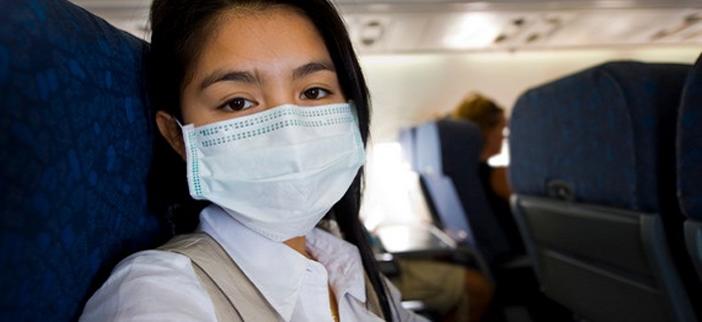Managing Your Health at 30,000 Feet

Frequent flyers face dehydration, oxygen deprivation and even DVT.
No matter how frequent flyers travel, there are certain common frustrations that everyone experiences. Although common frustrations may get the most attention, the ones underlying the surface may provide the most overall danger.
From circulatory diseases to mental health concerns, travelers face more hazards than they realize every time they take to the skies. Dehydration, swelling and even circulatory problems are just some of the negative side effects of frequent flying.
Dehydration
Everyone understands the importance of staying hydrated on warm days or while exercising. Equally important is the need to stay hydrated when flying. Although commercial aircraft cabin are pressurized for flyers’ comfort, the humidity level can drop as low as ten percent, matching the average summer humidity of the Mojave Desert.
According to the National Institutes for Health, symptoms of dehydration can include headaches, muscle cramps, dizziness, a feeling of light-headedness and listlessness. Travelers can combat dehydration by drinking plenty of water or sports drinks that include electrolytes.
Jet Lag
The effects of flying long distances can also follow flyers off their aircraft as well. After crossing several time zones in a matter of hours, travelers may experience difficulties going to sleep, or maintaining a normal sleeping rhythm at their destination. This is better known by the common term jet lag.
Even though jet lag is a real condition, there are many ways for travelers to get better sleep while they traverse the globe. Experts recommend travelers stay hydrated while they travel, avoid alcohol as a sleeping aid and maintain a proper pace of eating and resting upon arrival.
Oxygen Depravation
Although aircraft cabins are pressurized to retain oxygen and keep flyers feeling comfortable, an inherent lack of oxygen at high altitude remains a problem. In 2005, a group of Northern Irish researchers discovered that at high altitudes, flyers oxygen saturation levels can drop by up to six percent.
While cabin air often provides enough oxygen for passengers, those sensitive to breathing conditions may want to make arrangements prior to flying. The World Health Organization recommends at-risk travelers consult their airlines about carrying on oxygen tanks. In an emergency, airlines may also provide travelers with rescue oxygen.
Swelling
Cabin pressurization and dry air can often contribute to other physiological factors as well, not just dehydration. Alongside sitting for hours at a time, the combination of factors can cause travelers to experience swelling in their legs and feet. This can result in discomfort, especially after sitting for hours at a time.
While some swelling can be normal, the Mayo Clinic offers several tips to help travelers fly in comfort. Travelers who want to reduce their swelling should wear loose fitting clothing, flex ankles and knees frequently while traveling and drinking plenty of fluids to fight dehydration.
Deep Vein Thrombosis (DVT)
Finally, a lack of movement from sitting in an aircraft can contribute to more than just swelling and discomfort. In rare conditions, being stationary for hours at a time combined with the pressurization may contribute to deep vein thrombosis, or DVT.
According to AltMD.com, “travelers’ thrombosis” can be attributed to sitting for long periods of time without excessive movement. The problem lead to Qantas releasing an in-flight exercise video in 2015, encouraging travelers to stretch and move on multi-hour international trips.
While traveling comes with inherent risks, health concerns can be minimized. By understanding the most common health concerns, frequent flyers can continue to see the world in comfort.
[Photo: Getty]






















